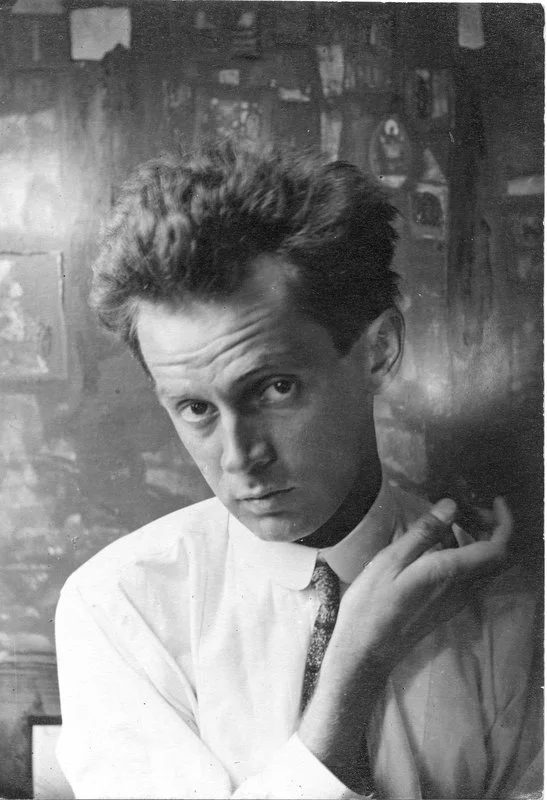Egon Schiele (June 12, 1890-October 31, 1918)

Egon Schiele. 1914, Photograph by Anton Josef Trcka (Antios)
Egon Schiele was born in Vienna, Austria and is known as a painter, printmaker, and draughtsman. Shiele demonstrated artistic talent as a child and was admitted into several academies, but often came into conflict with his instructors. In 1909, Schiele finally left the academy for good and formulated the group Neukunstgruppe with other like-minded artists including Aton Peschka, his future brother-in-law. The manifesto for the Neukunstgruppe emphasized absolute creative self-determination and the individual artist which might have contributed to the dissolution of the group after only a few exhibitions.
Schiele became the protégé of Gustav Schiele, who was a habitual mentor of young artists. Schiele’s early works bear striking similarities to the works of Schiele, though Shiele eventually develop his own distinct style and vocabulary that included figural convulsive gestures that were inspired by a variety of sources including Japanese woodcut prints. At Schiele invitation, Schiele exhibited at the Vienna Kunstschau in 1909. This exhibition exposed him to the works of Edvard Munch, Jan Toorop, and Vincent van Gogh whose work Sunflowers, he painted tributes to. Schiele’s participation in this exhibit and others brought him to the attention of critics and collectors who became his chief patrons. Several of which, including critic Arthur Roessler, posed for portraits in 1910 when Schiele began experimenting with his figural style. Schiele took the human form and exaggerated the gaunt, hallow portions of the figure and juxtaposed these qualities with angular, sharp gestures inspired by Japanese woodblock prints and sculptures by Georges Minne.

Adolf and Marie Schiele with their children Egon, Melanie, and Elvira, 1893 Author Joseph Muller

Portrait af Egon Schiele
Schiele shared studio space with fellow artist Max Oppenheimer before moving to his mother’s hometown of Krumau in present day Czech Republic. His further exploration of the human form, particularly his numerous self-portraits, manifested a confrontation of his own anxieties and emotions. His depictions of female models that bear their sex with astonishment and torment. He also depicts heterosexual and lesbian couples locked in a sexually charged embrace. These images, despite being sexually charged, lack conventional eroticism, emphasizing the animality of the human forms. Because of Schiele’s perceived lack of morality, living with his girlfriend and using local girls as the models for his paintings, the negative feelings towards him eventually drove him to leave the town.

Egon Schiele, 1918. Dorotheum
In the summer of 1911, Schiele moved to Austria where he made important international contacts as a member of Sema’s artist association in Munich. He also met seventeen-year-old Walburga (Wally) Neuzil who lived with him and served as model for some of his best known works. This progress was stalled by his arrest in the spring of 1912 for suspicion of seducing a twelve-year-old girl.
Despite the charge being unproven, he was sentenced to 24 days in prison for allowing the child access to his ‘immoral’ drawings. The experience left Schiele traumatized.

Egon Schiele, before 1907

Egon Schiele and Edith Harms, ca. 1918
1912 marks the beginning of Schiele’s mature work. He set up studio in Vienna and began participating in many exhibitions and group shows. He separated from Wally Neuzil in 1915 and married Edith Harms. During this period his work took on a less morbid tone. Near the end of his life, Schiele’s planned work seemed to suggest reconciliation with the society he long felt outside of, alas he was never able to carry these works to fruition. Three days after the death of his pregnant wife, the artist f died of Spanish flu on October 28, 1918.